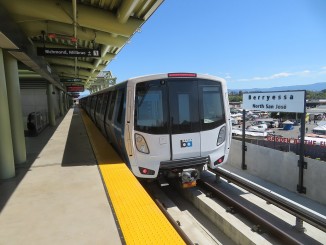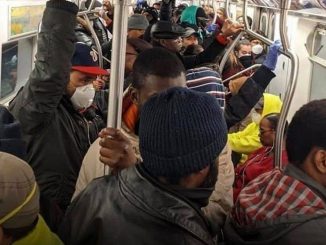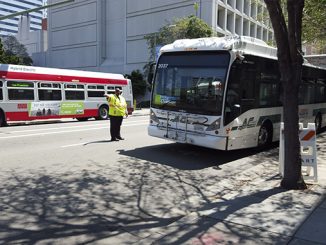Our systems of transportation impact our lives in many ways. In most of the U.S. today, it is necessary for almost every adult to own a car. The individual automobile is the main method of personal transportation to and from work and home – everybody in their own car. But this method of transportation causes huge problems for the environment, for people’s health, and for quality of life. If we are going to have a future worth living, we need to change our method of transportation, and public transit will be a necessary part of the solution.
For decades now, scientists have pointed out the dangers of climate change. The last three years have been the hottest on record. Polar ice caps and glaciers are melting, sea levels are rising and deserts are getting bigger. Extreme storms and heat waves are at higher levels than any time in the last 100 years. All of this is a product of global warming. The major cause of global warming is the emission of what scientists call greenhouse gases, which trap much of the sun’s energy close to earth, creating this warming effect. Cars and trucks are responsible for almost 25 percent of global greenhouse gas emissions. If we are going to reduce greenhouse gases, we must reduce the number of cars on the road.
What about hybrid and electric cars? Some people argue that we can stop greenhouse gas emissions by choosing better cars. But it doesn’t matter what kind of car we drive – it takes massive amounts of energy to build a car. If an electric car is being charged with electricity from a coal-powered energy plant, it’s still polluting, just from the powerplant’s smokestack rather than the car’s exhaust pipe.
Cars degrade our quality of life. Hours spent in traffic cause stress, and waste time, and threaten our health and even our lives. The areas with the highest traffic congestion have the highest rates of childhood asthma, and 1.3 million premature deaths a year are caused by pollution from car exhaust. Traffic is also unsafe. Traffic accidents take up to 33,000 lives a year making them the number one cause of death for people under the age of 34.
Public transit has the potential to address all these problems. It’s simple math. Public transportation produces five to ten percent of the greenhouse gases that cars and trucks do – and that’s not even with the most advanced transportation technologies, like solar and magnetic. Putting more public transit in place will dramatically reduce the need for cars on the road and significantly reduce carbon emissions.
The main reason people rely on cars is because of the poor state of public transit. A Natural Resource Defense Council survey polled that 55 percent of Americans would prefer to drive less, but 74 percent say they have no choice. The average American spends one week per year in traffic. Who in their right mind would prefer spending hours alone in traffic to a quick ride on a train or bus?
Public transit is safe. Traffic accidents are caused by thousands of drivers hurrying to and from their destinations. All of the thousands of deaths caused by traffic pollution could be eliminated by clean efficient public transportation. Studies have shown that communities with better public transit systems have one quarter as many traffic fatalities.
Public transportation would improve our lives on all fronts, from the environment, to health, to quality of life. The only thing that is stopping us is the fact that our current system of transit is organized for the benefit of the gas, tire and other auto companies, profiting by putting each of us in a car as we pour dollars into our gas tanks and into their pockets. We need a different set of priorities which takes into account the environment, our health, and our quality of life. If our society is going to have a better future, public transit will be an necessary part of the equation.




